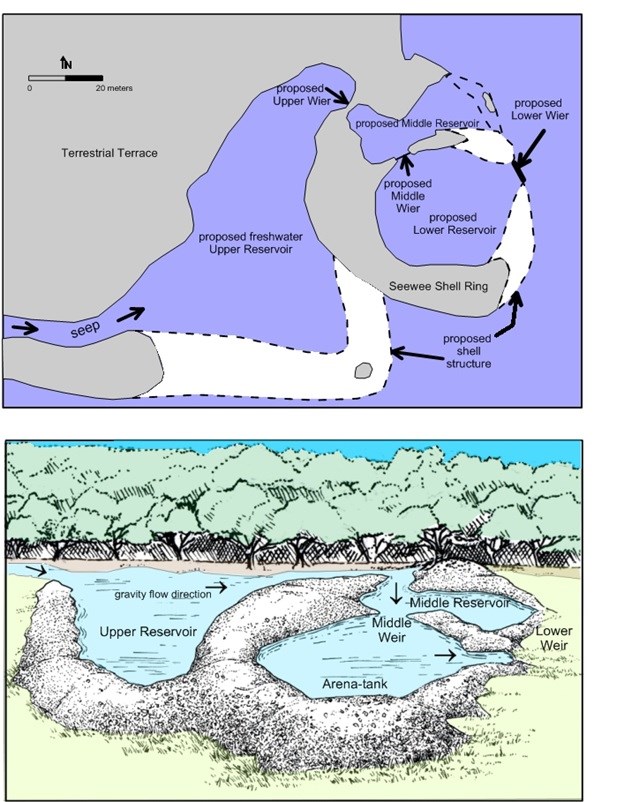Last updated: August 30, 2019
Article
Experimental Archaeology: Were Archaic Shell Rings Prehistoric Water Tanks?

NPS, SEAC
Other archaeologists, including Dr. Mike Russo of the Southeast Archeological Center (SEAC) are not so sure. The standard view holds that people lived along the inside edge of the rings and threw the shell from their many meals behind them, which over decades—and sometimes centuries—formed the enormous ring structures that still stand today. Because the ring plazas hold evidence of houses, hearths, burials, and food storage, it seemed unlikely to us that rings were used to hold water. But Dr. Russo also suspected the freshwater reservoir idea was way off simply because loose piles of shell and the sand upon which shell rings were built cannot hold water. Put simply, shell and sand structures leak.
To test this idea, Dr. Russo and his colleagues at SEAC built a large ring of shell to see if it could hold water. The experiment and its results can be seen here:
YouTube VideoShell rings were huge structures even by today’s standards (some are larger than two football fields across and up to 20 feet high). At the time they were built they the largest structures in North America that would not be matched in size for another 3,000 years when the large stone temples in Central America began to appear. Unlike stone pyramids, shell rings were not built as a single event, public works construction projects. Rather they were built gradually over time.

NPS, SEAC
